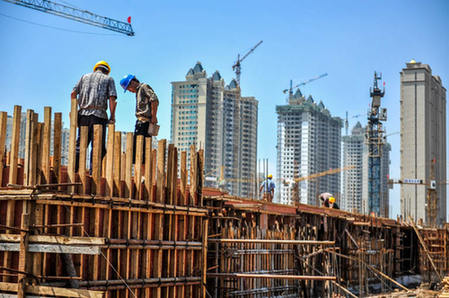What Are the Real Problems of China’s Economic Growth?
China is the world’s second-largest economy, and how its economic growth progresses will inevitably influence that globally. The outside world has followed closely the sustainability of China’s economic growth. Such interest was the basis for the BBC documentary How China Fooled the World. The documentary is centered around China’s economic growth having been driven by vast amounts of credit from the banking sector over the past few years. However, it comes to the arbitrary conclusion that this development mode is not sustainable. By ignoring the increasing domestic consumption demand and China’s structural reforms, and choosing to focus solely on and exaggerate the potential risks of such economic development, the filmmakers, while raising a number of valid concerns, have made a miscalculated summation.
 |
|
Data show that from January to August of 2014, China’s total investment in real estate stood at RMB 5.8975 trillion, a nominal year-on-year increase of 13.2 percent. A further decline in growth is expected. |
The China Advantage
Over the past few years, China’s economic development has demonstrated all the characteristics of growth driven by mounting investment. Former Chinese Premier Wen Jiabao stated as much in 2007 when he determined that the growth model was “unstable, unbalanced, uncoordinated, and unsustainable.” Therefore, the need to transform China’s economic development model was emphasized in the 12th Five-year Plan (2011-2015), one of the key missions being the expansion of domestic consumption demand.
Each country has its own economic risks, but the likelihood of these risks evolving into a crisis or crises depends on whether the economy has advantages through which to boost its growth. Compared with many developed Western countries, China’s biggest advantage lies in its expansion of domestic consumption demand and the upgrade of the consumption structure.
First of all, consumption and personal spending in China is on the up, with expenditure from Chinese citizens increasing to RMB 19.04 trillion (US $3.1 trillion) in 2012 from RMB 175.9 billion (US $28.6 billion) in 1978. In addition, the increase in total retail sales exceeded RMB 2 trillion (US $0.32 trillion) in 2013, equal to a year of total sales in the mid-1990s in China.
Furthermore, the consumption structure of China’s urban and rural residents has advanced from the desire for life necessities to durable consumption goods to consumption of services. One way to examine this progress is the Engel coefficient, a major indicator of the living standards of a country that measures the percentage of a household’s expenditure on food out of its total spending. In 1978, the Engel coefficient was 57.5 percent for urban residents and 67.7 percent for rural citizens. By 2013, the Engel coefficient for urban citizens had decreased to 35 percent, with 37.7 percent for rural residents (a lower figure indicates a higher standard of living).
Finally, from 1978 to 2011, the average annual consumption growth of the U.S., Japan and the European Union were 6.3 percent, 5.9 percent and 5.9 percent respectively. In comparison, the average annual consumption growth in China was 11.5 percent over the same period, demonstrating a reduced consumption gap between China and these regions.
We cannot say that this documentary ignored China’s domestic consumption completely. Robert Peston, the film’s presenter, visited a night market in Wuhan and saw for himself consumption at work. Yet, he did not analyze further the potential of domestic consumption demand in China; he did not address the strong purchasing power of Chinese citizens during Singles’ Day on November 11 each year that online retailers in China regard as a battlefield – one that can result in astronomical single-day revenues, rather than casualties.
